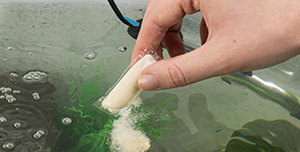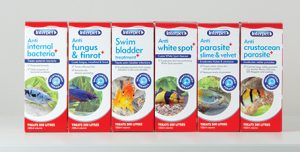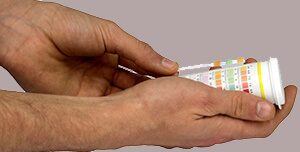An aquarium is a great way to bring the natural beauty of the underwater world into your home, but it also requires regular maintenance and care. Here are some of the most common aquarium tests and treatments you should know about.
What are aquarium test kits?
Aquarium test kits are essential for monitoring the water quality of your tank. These kits can help to identify the pH, nitrate, nitrite, ammonia and water hardness levels in your aquarium.
Types of aquarium test kits
There are several types of water test kits available, each designed to measure and monitor the different water parameters of your aquarium.
One of the most common types is a liquid or tablet test kit, which uses drops or tablets that are added to a sample of tank water to measure pH, nitrate, nitrite, ammonia and water hardness. Test strips are also available to measure these parameters.
Master test kits are a great way to measure several parameters in one package. These kits are an excellent choice for beginner aquarists who want to get a better understanding of their tank’s water chemistry.
What makes a healthy fish tank?
A healthy aquarium is not just about water quality, but a whole host of factors. The first step is making sure you’re providing your fish with a balanced and nutritious diet, as well as the right environment for them to thrive in.
A good filter is essential for removing excess waste and toxins from the water, as well as providing oxygenation. Regular water changes should be performed to remove dirt, detritus and to prevent the build up of chemicals like nitrate which can contribute to algae growth.
What pH level should my fish tank be?
The pH level of your aquarium should be between 6.5 and 8.5, with 7.0 being the ideal balance for most freshwater fish. If the pH is out of this range, then you will need to adjust it using a water conditioner. Keep an eye on your aquarium’s pH levels as they can fluctuate due to factors like fish waste and water changes. Speak to an expert at your local fish shop to find out the best pH for the fish you keep.
How do I reduce ammonia in my fish tank?
Keeping your fish tank in a healthy state requires regular maintenance, such as frequent water changes and filter cleaning. You should also check the parameters of your aquarium regularly. Ideal pH levels range from 6.5 to 8.5, while ammonia and nitrite should be at 0mg/L.
To reduce ammonia levels, you can use water conditioners that convert ammonia into a non toxic compound, or use bacteria treatments to help boost your filter bacteria population. Regular water changes will also help reduce ammonia levels although this only delays the problem. You will need a fully functioning filter with enough nitrifying bacteria present to remove all of the ammonia your fish produce.
Aquarium treatments
When it comes to aquarium treatments, you should be aware of the various diseases and parasites that can affect your fish. If you notice any signs of infection or illness, you may need to use a medication, such as an antibacterial or antifungal treatment to help clear up the problem. These treatments should always be used in accordance with the instructions provided.
Water conditioners
Water conditioners like a dechlorinator are designed to eliminate chlorine, chloramine, and other toxins like heavy metals that are present in tap water before it is used in your aquarium. This is important as these chemicals will harm your fish, if not removed.
Medications
Medications are available for specific illnesses, such as bacterial and fungal infections. These products are used to fight off the pathogens causing the infection.
Algae treatments
Algae treatments are designed to get rid of unwanted algae growth in an aquarium. These products help keep your tank clean and free of algae, leaving your aquarium looking beautiful and allowing for optimum conditions for your fish. These treatments come in a variety of forms, including liquids and granules.
When treating your aquarium, consider the health of your fish and other inhabitants. If you notice any signs of stress or illness, such as lethargy or changes in behaviour, then you may need to use a specific medication to address the problem. Examples include anti-parasitic treatments for parasites or antibacterial treatments for bacterial infections.
What treatments should I use?
When it comes to treatments for your fish, it is important to use those that are designed to treat the pathogen your fish is suffering from. Input the symptoms on our diagnostic tool to assess what illness is troubling your fish and the best treatment to use to remedy the situation.
How much treatment should I use?
The amount of treatment you use depends on the size of your aquarium. If you have a small tank, you need to use less than if you had a larger one. Water treatments come with directions on how much to use for different aquarium sizes. It’s important to read and follow these instructions carefully to ensure that your fish are safe from any potential harm from too much or too little of a treatment.
You can also use our dosage calculator to work out how much treatment to use based on your aquarium size.







